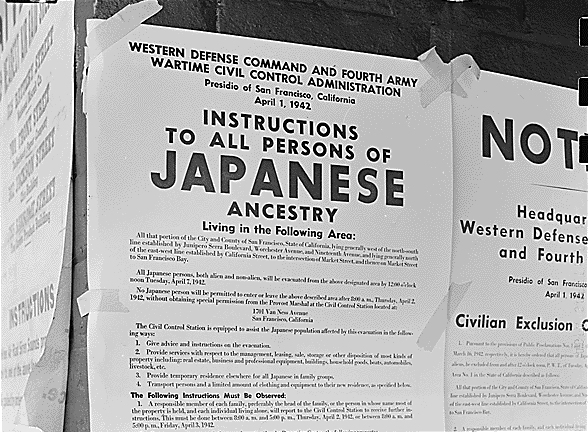When the US entered World War Two after the bombing of Pearl Harbor in 1941, the US responded in many ways and one was the internment of those of Japanese descent.
Around 120,000 American-born Japanese were evacuated from the coast of the US, after the Pearl Harbor attack.
Further, President Roosevelt signed an Executive Order to round up all Japanese and their families, as well as Germans and Italians or anyone who may pose a security risk to the United States. This even applied to families who were born in America.
The FBI took the search for possible spies and enemies within the US as its top priority. When Roosevelt had signed the Order they had already arrested more than 250 Italians, 1000 Germans and more than 2000 along the two coastlines.
Crystal City in Texas, a remote town in the desert on the border with Mexico, was the location for the FBI’s main internment camp. It was a legal Act from 1798 that allowed the internment of suspected enemies in the US, as well as outside the US. More than 4000 Germans, 2000 Japanese and 250 Italians were extradited from South America and brought to the American camp to be imprisoned.
The Act has enabled subsequent presidents such as George W. Bush and Barack Obama to capture and hold terrorists located overseas.
Surprisingly, some of those the FBI rounded up were even Germans of Jewish descent, who had fled Germany to get away from the Nazis. But they were captured under suspicion by the US.
Interment was popular in political and military circles during World War Two and President Roosevelt was under pressure to pursue the imprisonment campaign. However his wife, Eleanor Roosevelt was the only one within his close circle who believed it was too many people panicking about the war.
The prisoners were to also act as hostages for potential exchange negotiations with the Nazis. Many Americans and Allies were trapped and imprisoned within Nazi-occupied countries across Europe, and Roosevelt believed he might be able to use native Germans and people from the Axis countries to negotiate the release of Americans. A special unit was set up within the Department of State to specifically negotiate prisoner exchanges, the Disinformation reports.
Crystal City was the location of any prisoner exchanges that happen, with American diplomats, businessmen, troops, doctors and charity workers being returned to the States. The first exchange was in 1942 and the last in 1944, where hundreds of prisoners were exchanged between the two sides.
